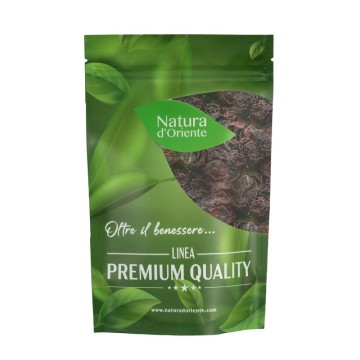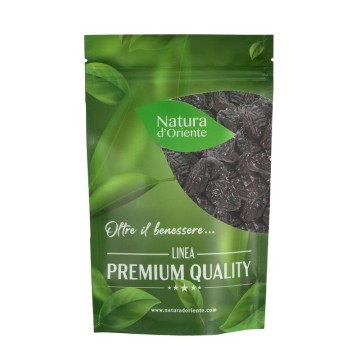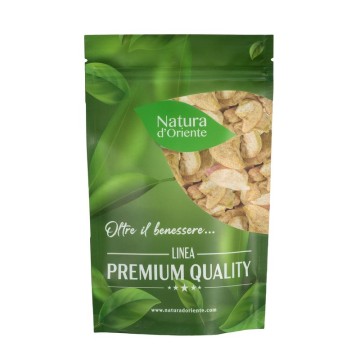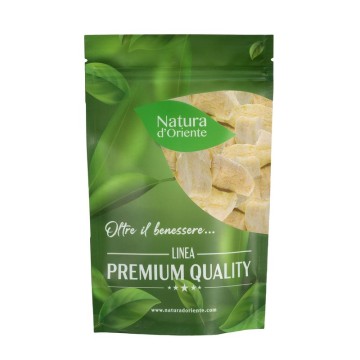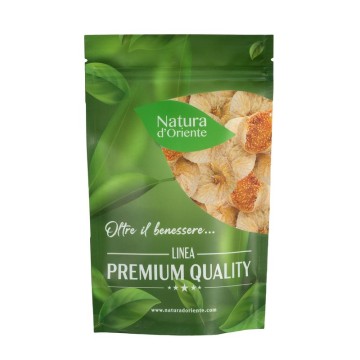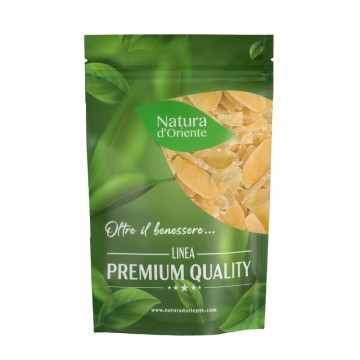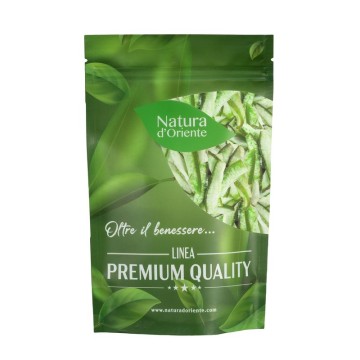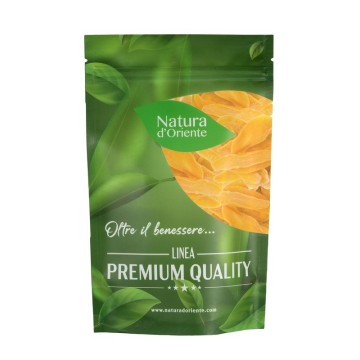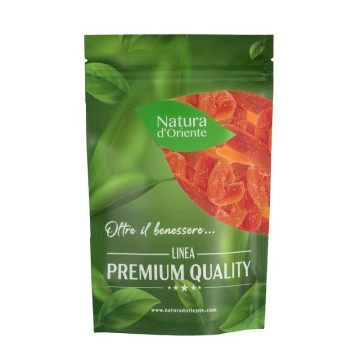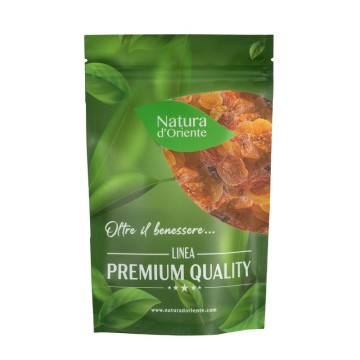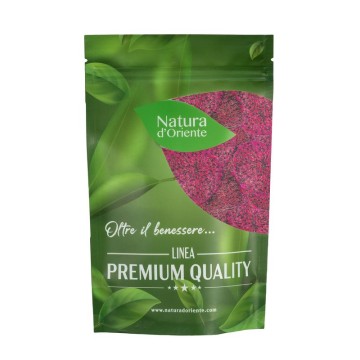Quartered candied lemon peels
Sweetness, contrast of flavors and beneficial qualities: these are the characteristics attributed to candied lemon. This citrus fruit has been known for its properties for thousands of years, and even the peel has always been used for taste and well-being advantages. Let's see how...
Candied lemon: properties and benefits
We know that lemon is not only a refreshing and tasty fruit, but it is also rich in various nutrients that offer health benefits. The lemon peel is equally important, because it contains many enzymes and chemicals that can keep us healthy.
Several researches, in fact, have discovered that the peel of a lemon contains more nutrients and bioactive compounds than the fruit itself: vitamins, minerals, fibers and antioxidant flavonoids that can give us advantages nutritional.
Lemon peel is low in saturated fat and contains no cholesterol, and is a good source of important vitamins such as vitamin A, vitamin C and folate. Lemon peel is a great source of fiber and also provides us with large amounts of minerals such as potassium, calcium, magnesium and iron.
Nutrients such as flavonoids present in lemon peel, for example, are antioxidants that prevent oxidative stress of the body's cells (cause of aging and pathologies). Thanks also to vitamin C, lemon peel helps in the brightness and softness of the skin, in fact, as well as being notoriously a beneficial substance for the immune system.
The consumption of lemon peels and the flavonoid polyphenols they contain is useful for lowering LDL (bad) cholesterol levels in the blood, a factor that can help maintain the health of the Heart.
In addition, the potassium found in lemon peel is useful for maintaining normal blood pressure levels. Candied lemon peel is also considered a source of calcium, a mineral useful for maintaining healthy bones.
Among the various flavonoids found in the peel of candied lemons, there are terpenes such as d-limonene, which have beneficial properties for the well-being of cells
Lemon and its peel are known to improve digestion as they contain many dietary fibers. Fiber helps normalize bowel movements and in anti-constipation function. Lemon peel has been used since ancient times to reduce intestinal gas and stomach pain, indigestion, colic and also as an anti-emetic.
In terms of taste, candied lemon peel is a good way to consume it, for its goodness. The candied lemons in cups are created with lemon peels dipped in a syrup of water, sugar and other flavourings, which are boiled together.
Origins and History of cultivation
Lemon is one of the oldest citrus fruits, according to many scholars originating in the East, between China, Burma and the Indian region of Assam. Evidence of lemons in China dates back to 500 BC, while other studies believe lemons originated in the foothills of the Himalayas and then spread throughout the Middle East, Europe, Africa and the Americas via Christopher Columbus .
Lemon was known among the ancient Romans, and in the Middle Ages it reached Persia and Egypt. The name lemon derives from the Persian term līmū used for citrus fruits.
In Europe they were cultivated in the 10th century in Sicily, in the Renaissance period in Genoa, and gradually spread throughout the continent. If they arrived in the Americas through the first dominations of the sixteenth century, in Australia, it seems that Captain Cook introduced the fruit at the end of the eighteenth century.
Lemons have been used for many centuries as fruits with antiseptic and fluidifying properties, and in popular medicines they were also used as vermifuge and digestive citrus fruits. Currently, among the fruits that the earth gives us, lemons are the most consumed in the world, and lemon peel is also highly appreciated for its phytochemical and taste properties, with versions of dried lemons and candied lemon.
Plant and Fruit
The plant that gives the lemon fruit is Citrus limon, which is part of the Rutaceae botanical family.
Its young leaves are reddish andthey ripen to green; the lemon, in fact, is an evergreen deciduous plant that is not very tall. Thorns are rare, and are sometimes found on the twigs of the tree.
The fragrant flowers are white above and slightly purple below, while the fruits are oval, with a light yellow to warm yellow color, dotted with sebaceous glands.</p >
To grow at its best, the lemon plant prefers tropical and semi-tropical climates and slightly acidic soil. The commercial production of Citrus limon, in fact, is more successful in the subtropical regions of the world.
Nutritional values of candied lemon
Candied lemon peels are rich in nutrients and sugars. This candied fruit almost does not contain fat (0%), provides minerals, vitamins, fiber (about 2 g / 100 g) and about 300 kcal per 100 grams.</ p>
The nutritional properties of Lemon show good levels of vitamin C (about 5 mg / 100 g) and traces of vitamin A (about 19 IU). Even in the candied version, lemon provides minerals such as potassium (about 50 mg / 100g), magnesium (about 5 mg / 100 g), phosphorus (about 5 mg / 100 g) and iron (about 0.30 mg / 100 g).
Other beneficial substances are the phyto-nutrients of beta-carotene, flavonoids and terpenes.
How to consume candied lemon in cups in the kitchen or as a snack
Candied lemon peels are excellent as a hunger-busting snack, or as a delicious dessert covered in chocolate.
Candied lemons as snacks give a tasty and refreshing taste, but also very sweet given the sugars present. Often we know that candied fruit is added to desserts such as panettone, cakes, muffins, cupcakes or Sicilian cassata.
The shape of candied cups can be excellent for decorations and cocktails.
Candied lemon peels can also decorate ice cream tops, be added to yoghurt or some salads, to give a touch of a particular flavor (sour lemon candied with sugar) .
Candied lemon can go very well as an ingredient in a mix of dried fruit and cereals, for breakfast or a snack. Candied lemon cups could be sweeteners in teas and infusions, to protect digestion or counteract cold symptoms.
Candied lemon: side effects and contraindications
There are no particular contraindications to the consumption of candied lemons in cups, in moderate doses.
Obviously, like all fruit treated with water and sugar syrup, candied lemon contains significant amounts of sugar, not recommended for those suffering from diabetes and have high blood glucose levels .
The use of excessive doses is also not recommended for those who often suffer from stomach pain or gastric reflux, and for those with citrus allergies.

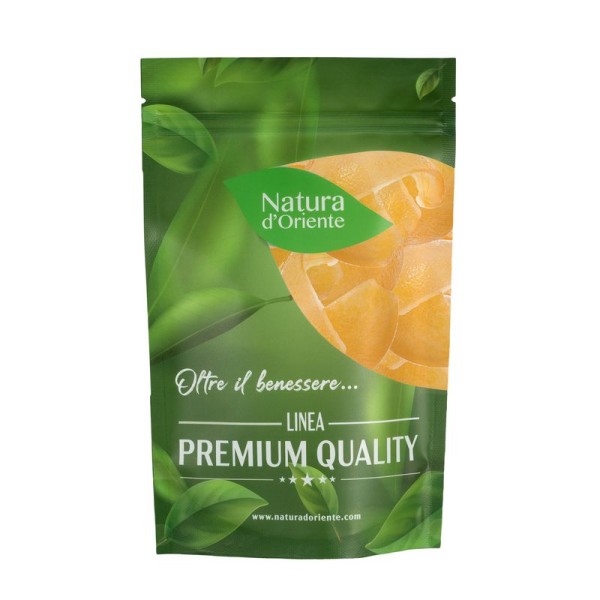





 No reward points for this product.
No reward points for this product.
